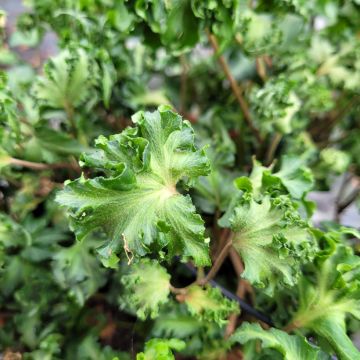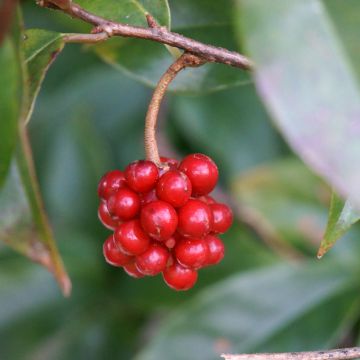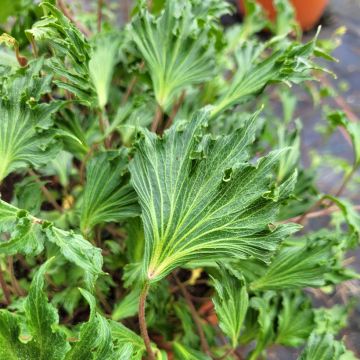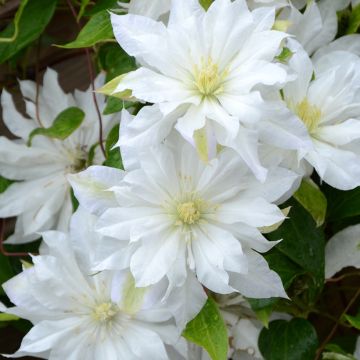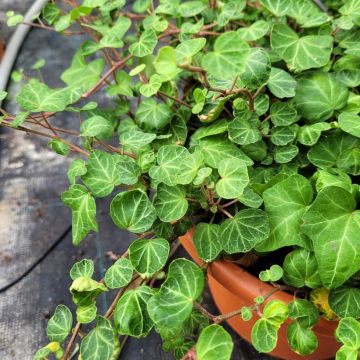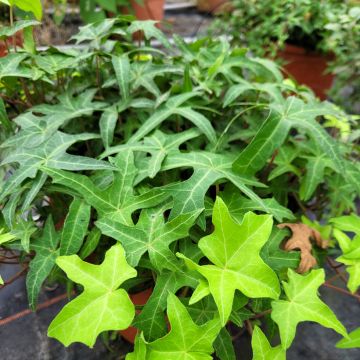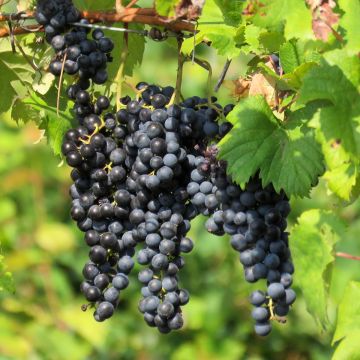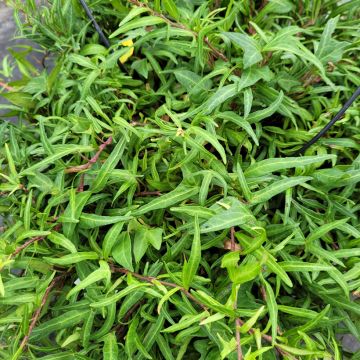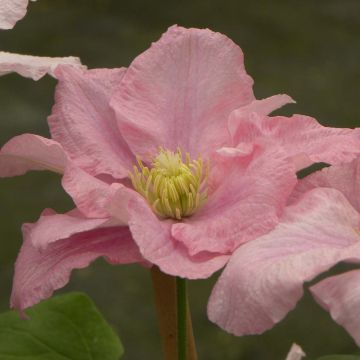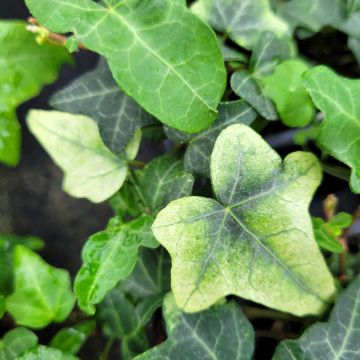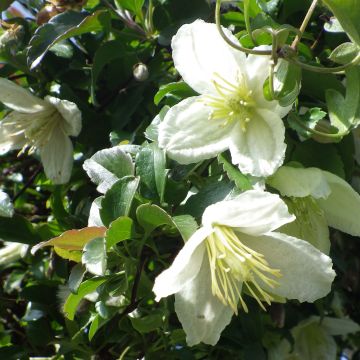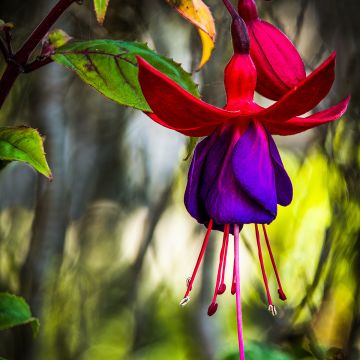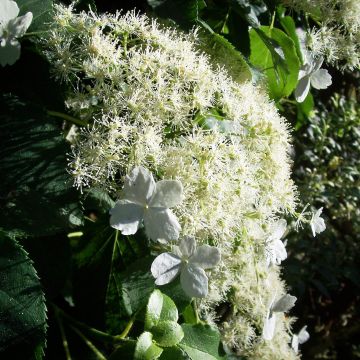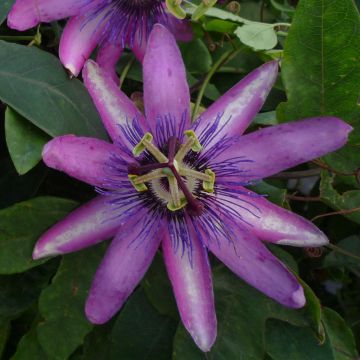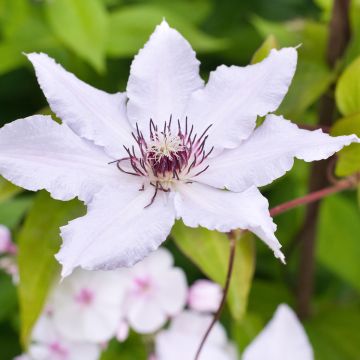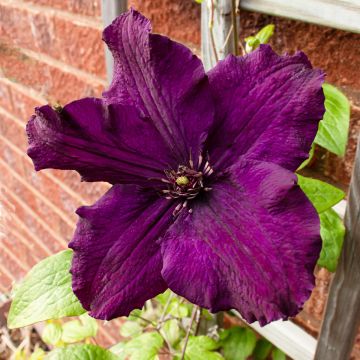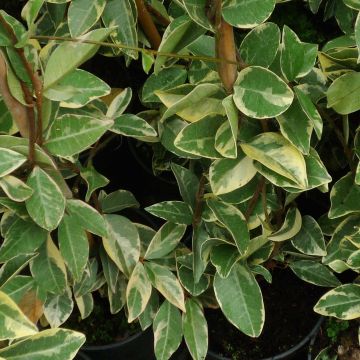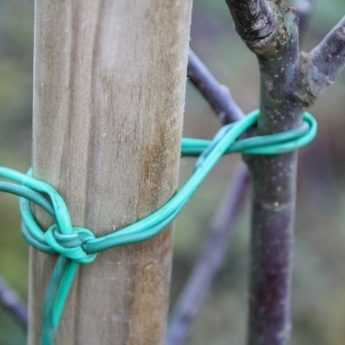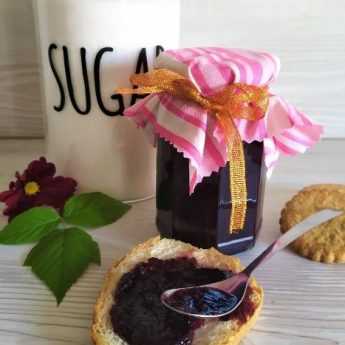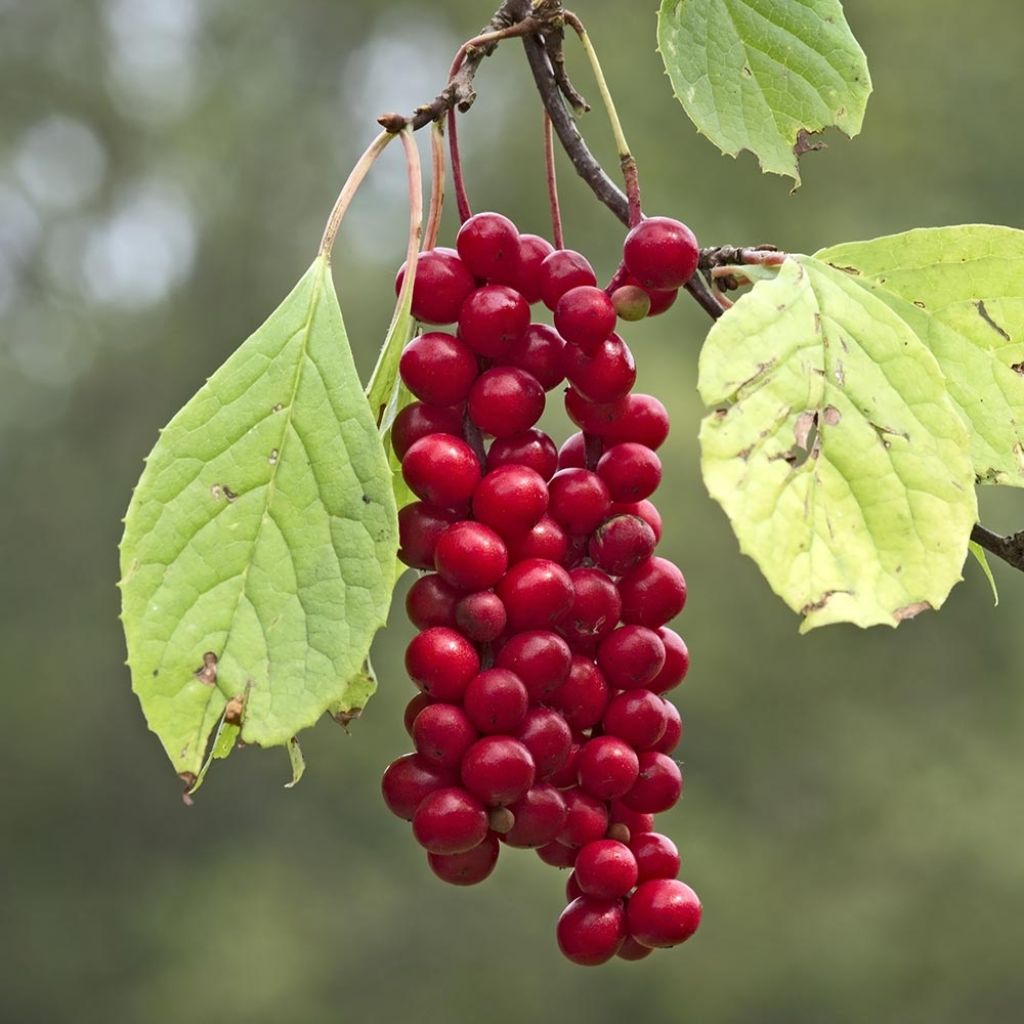

Schisandra chinensis Sadova N°1 - Baie aux 5 saveurs autofertile
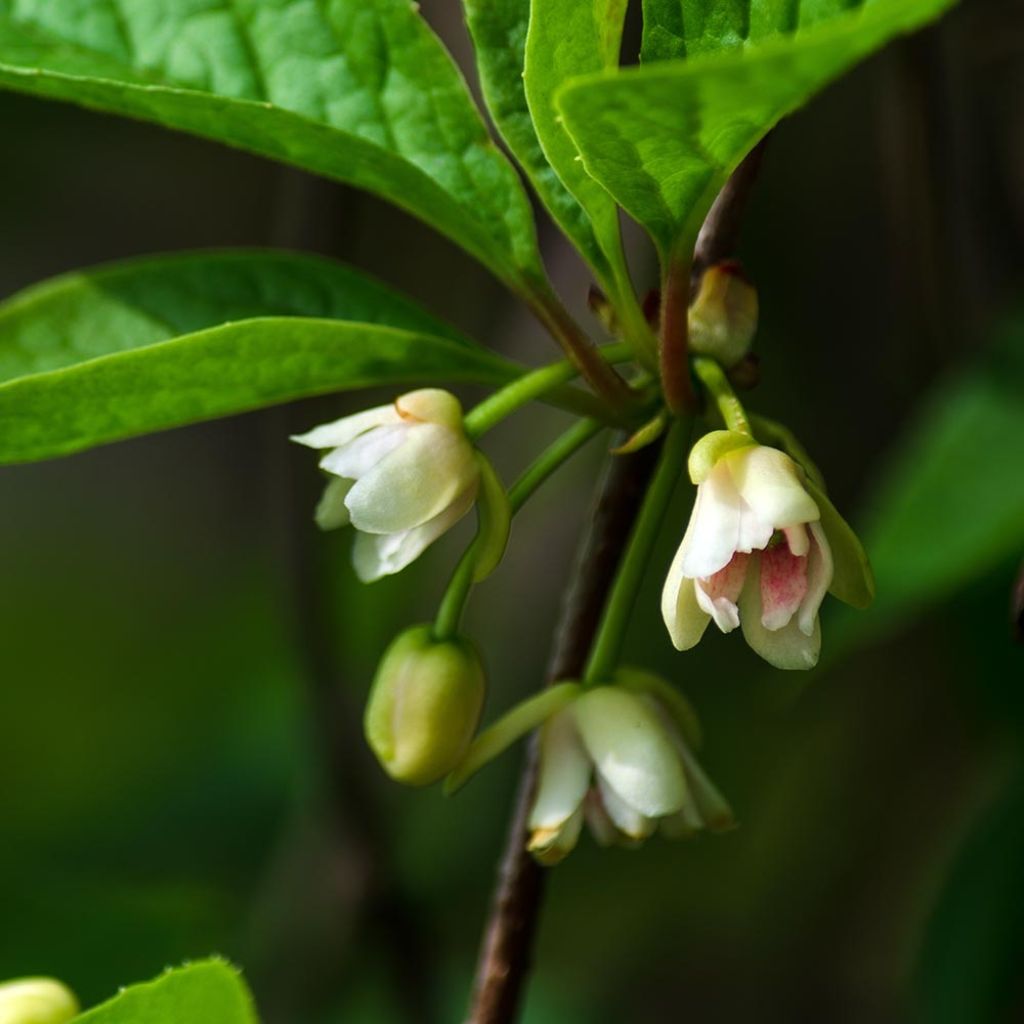

Schisandra chinensis Sadova N°1 - Baie aux 5 saveurs autofertile
Schisandra chinensis Sadova N°1
Schisandra chinensis Sadova N°1
Chinese magnolia vine, five-flavour fruit, chinese limonnik
Why not try an alternative variety in stock?
View all →This plant carries a 6 months recovery warranty
More information
We guarantee the quality of our plants for a full growing cycle, and will replace at our expense any plant that fails to recover under normal climatic and planting conditions.
Description
The Schisandra chinensis 'adova N°1' is the very first selection of truly self-fertile Chinese schisandra, meaning it is capable of bearing abundant fruit without the presence of a male plant nearby in the garden. The fruits of this vigorous Asian climber, called Five Flavour Berries, once dried and ground into powder, are used in traditional Chinese medicine. They are salty, sweet, sour, spicy, and bitter, which undoubtedly inspired their name. The use of the plant for medicinal purposes is only recommended with medical advice. The fruit harvest takes place from August to October.
Originally from Eastern China, Mongolia, and Korea, the Schisandra chinensis belongs to the Illiciaceae family. It is a large deciduous vining tree, hardy down to -23°C (-9.4°F), decorative with its large leaves and clusters of red fruits. It has a relatively slow growth but can reach 9 to 10m (29 to 33ft) long. To thrive, the Chinese Schisandra requires humus-rich, deep, and consistently moist soil, even in summer. Traditionally used for its aphrodisiac properties, it was just as appreciated as Ginseng. According to writings, its berries would allow any man to "possess ten women for a hundred nights". For centuries, young Chinese people consumed them before their wedding night. The Schisandra chinensis is mostly a dioecious vine (sometimes monoecious), producing either female or male flowers. To bear fruit and produce berries, the female plant generally needs a male partner.
The recently selected cultivar 'Sadova N°1' in Ukraine does not have this drawback since both female (pistils) and male (stamens) organs are present on the same plant. The deciduous foliage falls in autumn. It consists of beautiful slightly glossy leaves with strong veins, oval to elliptical in shape, finely toothed at the edges, tapering to a point, measuring on average 12cm (5in) long and 5.5cm (2in) wide, of bright green colour, distributed along the voluble stems that spontaneously wrap around the support provided. Flowering occurs in early summer on plants aged 5 or 6 years. It takes the form of small whitish flowers tinged with pink or green, measuring 1 to 2cm (0 to 1in) in diameter, slightly fragrant. After pollination by insects, they give way to clusters of round and fleshy red berries, shiny, measuring about 6-7mm (<1in) in diameter.
The berries can be consumed fresh or dried. They contain up to 17 amino acids and a high concentration of vitamins, including A, B, C, and E, trace elements, proteins, and essential oils. They should not be consumed by pregnant women. Moreover, regular consumption in small doses will have no problematic side effects. In China, the berries are dried and ground into powder to become Wu Wei Zi, literally the "berry with 5 flavours". You can make a tea out of it: boil 1 teaspoon of dried berries per cup for 20 minutes. Strain, add sugar according to your taste. Enjoy. Dried leaves are also sometimes prepared as a tea.
The Schisandra chinensis 'Sadova N°1' will be trained like a vine, young plants need to be guided on a support initially before the plant starts to conquer the support provided. This voluble climber, which can hide anything unsightly, is perfectly suited for ornamental fences, garden sheds, pergolas, trellises, or other arbors, and perfect for dressing up a wall with sturdy wires or a large trellis. For example, associate it with a golden hop, an akebia, or, to stand out, an aristolochia.
Report an error about the product description
Schisandra chinensis Sadova N°1 in pictures
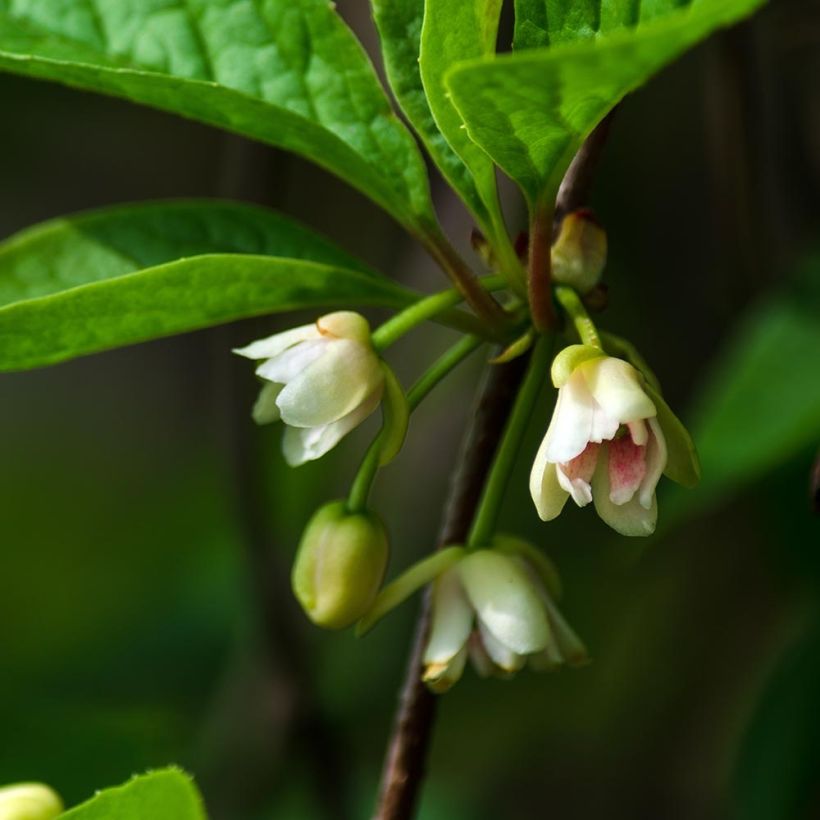

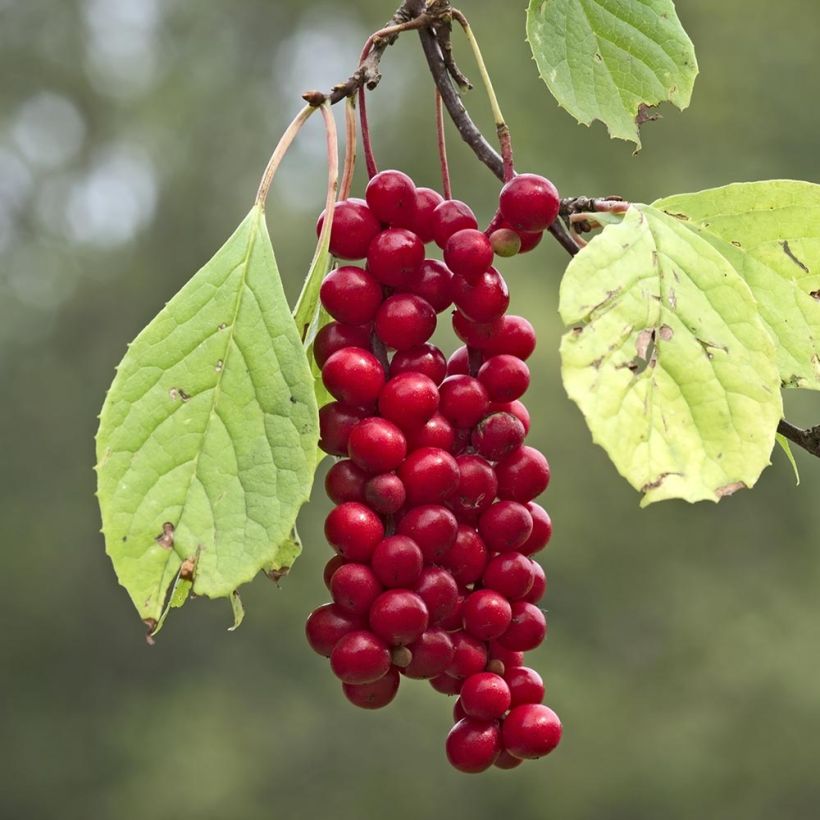

Plant habit
Fruit
Flowering
Foliage
Botanical data
Schisandra
chinensis
Sadova N°1
Schisandraceae
Chinese magnolia vine, five-flavour fruit, chinese limonnik
Southeast Asia
Other Climbers A to Z
View all →Planting and care
The Schisandra Chinensis 'Sadova N°1' requires a rather rich soil, enriched with humus or compost, even with a slightly clayey and slightly calcareous tendency, but remaining moist to wet in all seasons to thrive. It appreciates a sunny exposure that is not scorching, to semi-shady, but it still needs sun to bear fruit: the plant will develop very well in a north-facing position, but will not produce or willl only produce very few fruits. This vine can withstand temperatures down to -23°C, but cannot tolerate any drought or heatwave. Avoid soils that are constantly waterlogged, which are harmful to its roots. The base should be mulched every year before summer to keep the soil cool and moist, and organic compost should be added in spring.
Planting: Dig a hole twice as large as the root ball. Loosen the root ball with a slightly sharp tool to delicately break up the root cluster and promote growth. Place the bush in the hole without burying it too deeply. Water well to compact the soil and remove air around the roots. It is important to ensure that the plant does not lack water in the first year after planting, as well as throughout its life. In the first year, only vigorous stems should be retained. An application of organic fertiliser is beneficial at the start of the growing season, in spring. Train the young vine on its support as it grows.
Planting period
Intended location
Care
Planting & care advice
-
, onOrder confirmed
Reply from on Promesse de fleurs
Haven't found what you were looking for?
Hardiness is the lowest winter temperature a plant can endure without suffering serious damage or even dying. However, hardiness is affected by location (a sheltered area, such as a patio), protection (winter cover) and soil type (hardiness is improved by well-drained soil).

Photo Sharing Terms & Conditions
In order to encourage gardeners to interact and share their experiences, Promesse de fleurs offers various media enabling content to be uploaded onto its Site - in particular via the ‘Photo sharing’ module.
The User agrees to refrain from:
- Posting any content that is illegal, prejudicial, insulting, racist, inciteful to hatred, revisionist, contrary to public decency, that infringes on privacy or on the privacy rights of third parties, in particular the publicity rights of persons and goods, intellectual property rights, or the right to privacy.
- Submitting content on behalf of a third party;
- Impersonate the identity of a third party and/or publish any personal information about a third party;
In general, the User undertakes to refrain from any unethical behaviour.
All Content (in particular text, comments, files, images, photos, videos, creative works, etc.), which may be subject to property or intellectual property rights, image or other private rights, shall remain the property of the User, subject to the limited rights granted by the terms of the licence granted by Promesse de fleurs as stated below. Users are at liberty to publish or not to publish such Content on the Site, notably via the ‘Photo Sharing’ facility, and accept that this Content shall be made public and freely accessible, notably on the Internet.
Users further acknowledge, undertake to have ,and guarantee that they hold all necessary rights and permissions to publish such material on the Site, in particular with regard to the legislation in force pertaining to any privacy, property, intellectual property, image, or contractual rights, or rights of any other nature. By publishing such Content on the Site, Users acknowledge accepting full liability as publishers of the Content within the meaning of the law, and grant Promesse de fleurs, free of charge, an inclusive, worldwide licence for the said Content for the entire duration of its publication, including all reproduction, representation, up/downloading, displaying, performing, transmission, and storage rights.
Users also grant permission for their name to be linked to the Content and accept that this link may not always be made available.
By engaging in posting material, Users consent to their Content becoming automatically accessible on the Internet, in particular on other sites and/or blogs and/or web pages of the Promesse de fleurs site, including in particular social pages and the Promesse de fleurs catalogue.
Users may secure the removal of entrusted content free of charge by issuing a simple request via our contact form.
The flowering period indicated on our website applies to countries and regions located in USDA zone 8 (France, the United Kingdom, Ireland, the Netherlands, etc.)
It will vary according to where you live:
- In zones 9 to 10 (Italy, Spain, Greece, etc.), flowering will occur about 2 to 4 weeks earlier.
- In zones 6 to 7 (Germany, Poland, Slovenia, and lower mountainous regions), flowering will be delayed by 2 to 3 weeks.
- In zone 5 (Central Europe, Scandinavia), blooming will be delayed by 3 to 5 weeks.
In temperate climates, pruning of spring-flowering shrubs (forsythia, spireas, etc.) should be done just after flowering.
Pruning of summer-flowering shrubs (Indian Lilac, Perovskia, etc.) can be done in winter or spring.
In cold regions as well as with frost-sensitive plants, avoid pruning too early when severe frosts may still occur.
The planting period indicated on our website applies to countries and regions located in USDA zone 8 (France, United Kingdom, Ireland, Netherlands).
It will vary according to where you live:
- In Mediterranean zones (Marseille, Madrid, Milan, etc.), autumn and winter are the best planting periods.
- In continental zones (Strasbourg, Munich, Vienna, etc.), delay planting by 2 to 3 weeks in spring and bring it forward by 2 to 4 weeks in autumn.
- In mountainous regions (the Alps, Pyrenees, Carpathians, etc.), it is best to plant in late spring (May-June) or late summer (August-September).
The harvesting period indicated on our website applies to countries and regions in USDA zone 8 (France, England, Ireland, the Netherlands).
In colder areas (Scandinavia, Poland, Austria...) fruit and vegetable harvests are likely to be delayed by 3-4 weeks.
In warmer areas (Italy, Spain, Greece, etc.), harvesting will probably take place earlier, depending on weather conditions.
The sowing periods indicated on our website apply to countries and regions within USDA Zone 8 (France, UK, Ireland, Netherlands).
In colder areas (Scandinavia, Poland, Austria...), delay any outdoor sowing by 3-4 weeks, or sow under glass.
In warmer climes (Italy, Spain, Greece, etc.), bring outdoor sowing forward by a few weeks.



































